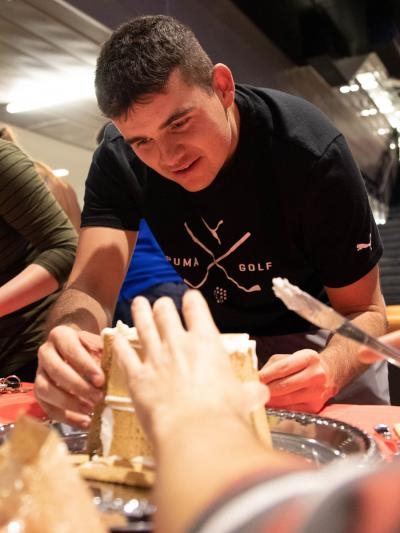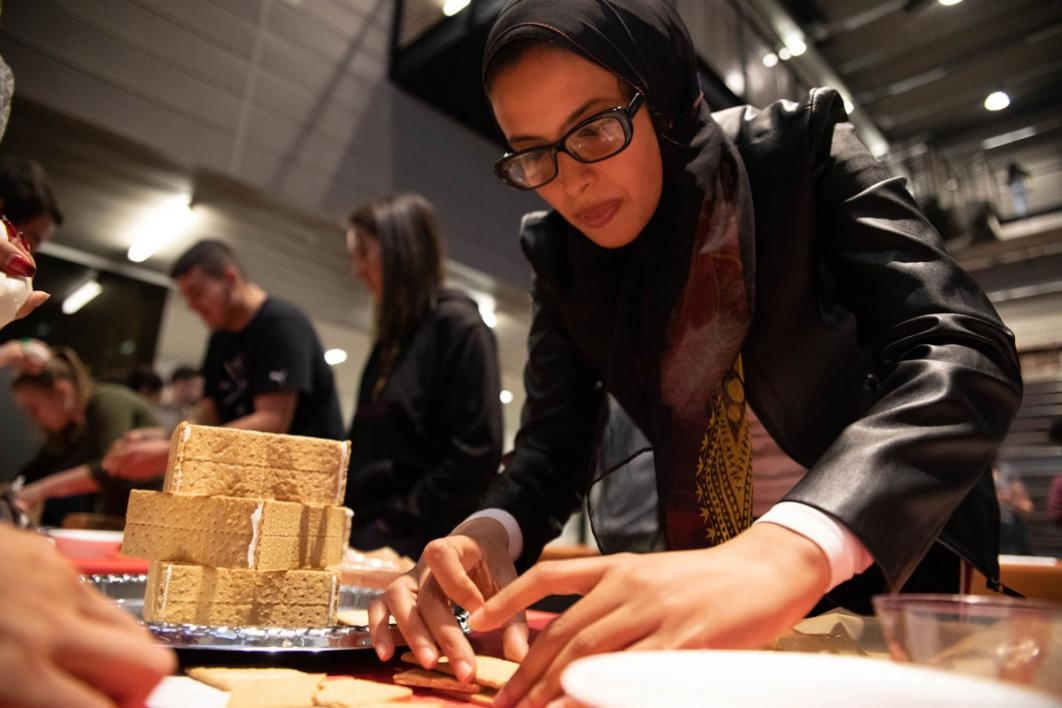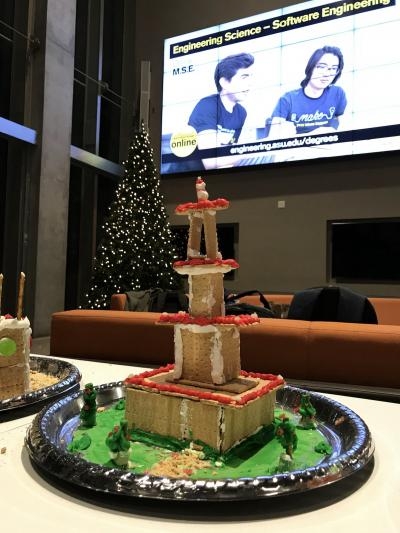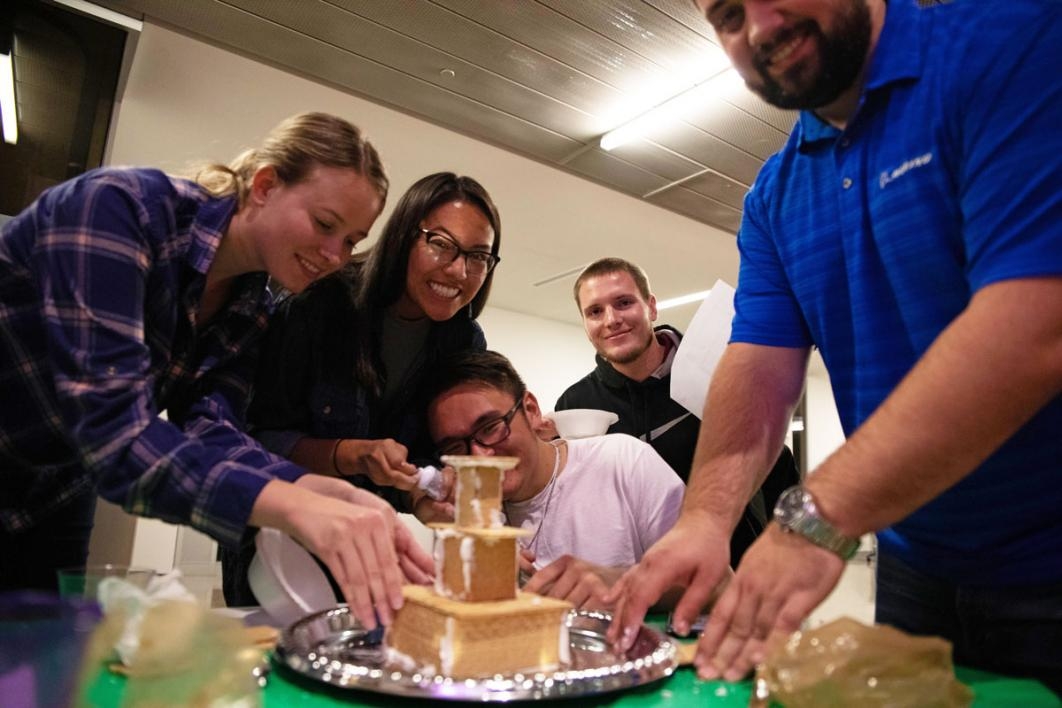What are the best holiday gingerbread houses made of? Sugar and spice and engineering advice.
Early this month, to spark some holiday cheer before final exams, the Arizona State University student organization Advancing Women in Construction challenged students across campus to put their skills to the test in a gingerbread house tournament.
Their construction and engineering knowledge can help you build your tallest, strongest and most innovative gingerbread creation yet.
1. Give it time to dry
Probably the most common culprit behind crumbling gingerbread houses is wet icing.
“It’s very important to give enough time for the icing to dry,” said Khin Hnin Kay Thwe, a construction management student in ASU’s Ira A. Fulton Schools of Engineering and public relations officer in Advancing Women in Construction. “This is the same process used to give concrete a certain amount of time to set so it has maximum strength.”
Just as you wouldn’t want to add a roof to a building with concrete supports that are still curing, let that gingerbread house icing harden up first!
2. Balance fantasy and practicality
If you’re taking cues from innovative architects like Frank Lloyd Wright, I.M. Pei and Zaha Hadid, you’ll want to add a lot of accoutrements to make your gingerbread house dazzle.
But Thwe has another recommendation: “Be concerned about the loads you’re putting on the material to make sure it won’t fall apart.”
Consider the weight of your decorative flair in proportion to the stability of the walls and roof (and don’t forget the first tip about giving your icing enough time to dry).
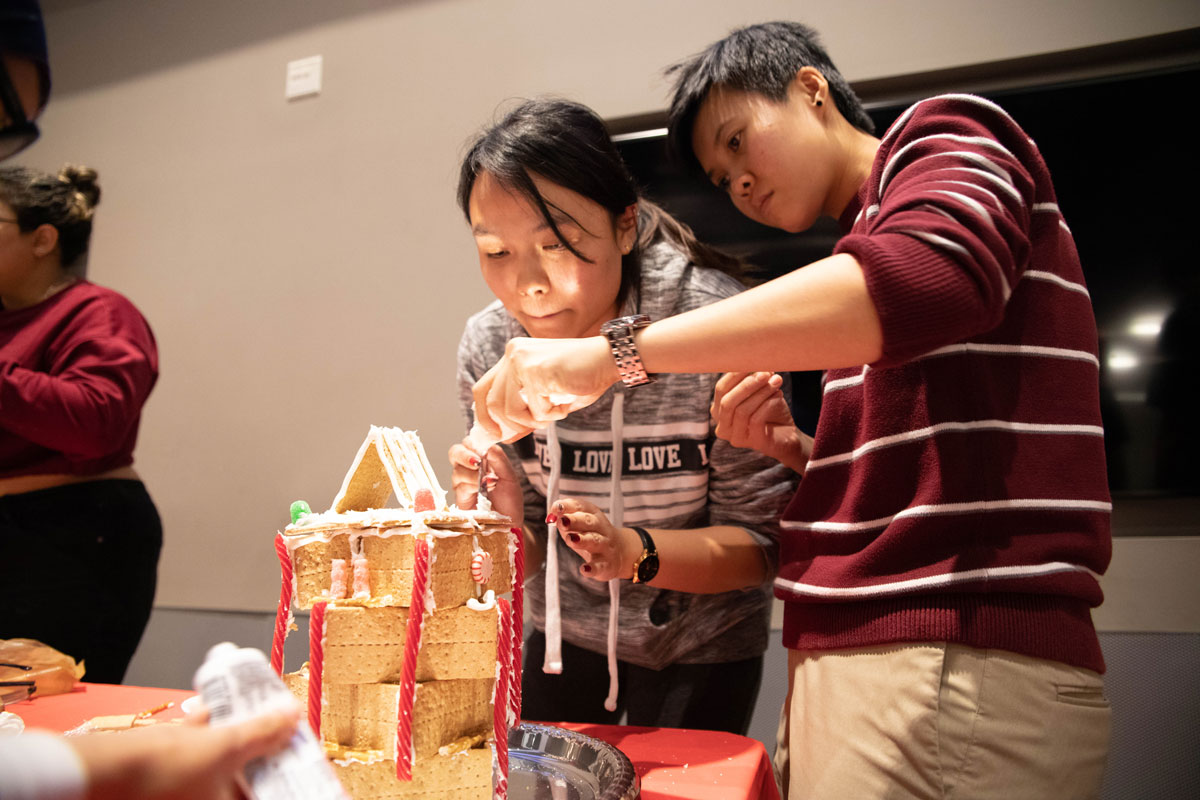
Mylena Dinh (left) and Amber Nguyen add decorations onto their gingerbread house. Photographer: Alisha Mendez/ASU
Planning your design ahead of time can help, as can the concept of constructability. That’s reviewing the construction plan before breaking ground to find obstacles or design and process concerns, said Kristen Parrish, associate professor of construction management and Advancing Women in Construction faculty adviser.
Knowing the end goal you have in mind is important for both sustainability and efficiency.
“This highlights the sorts of decisions that contractors make all the time about how to build a structure quickly and affordably while maintaining a safe site and delivering a quality product,” Parrish said.
With some planning, you can avoid making messes or wasting material to achieve the best results.
3. Think creatively for better designs
Though following too many creative threads on architectural style or decor can lead your gingerbread edifice to collapse, Parrish says creativity can also be a strength.
“(Gingerbread house builders) can learn about which sorts of ingredients lend the most stability, as well as shapes that best support height,” she said. “For instance, a triangular base may allow you to build up higher than a square base would permit.”
Try different materials and structural shapes and designs to find what works best.
Optional: Stick with the budget
While your opulent palace of gingerbread might stand strong using these tips, students competing in the tournament were also encouraged to create a cost-effective design with graham crackers, icing and candies for decoration.
Contending with cost constraints and limited materials mirrors the challenge construction professionals face when tasked with designing within a budget. So the competition judges scored the competitors in five categories: cost of materials, appearance, craftsmanship, color and design.
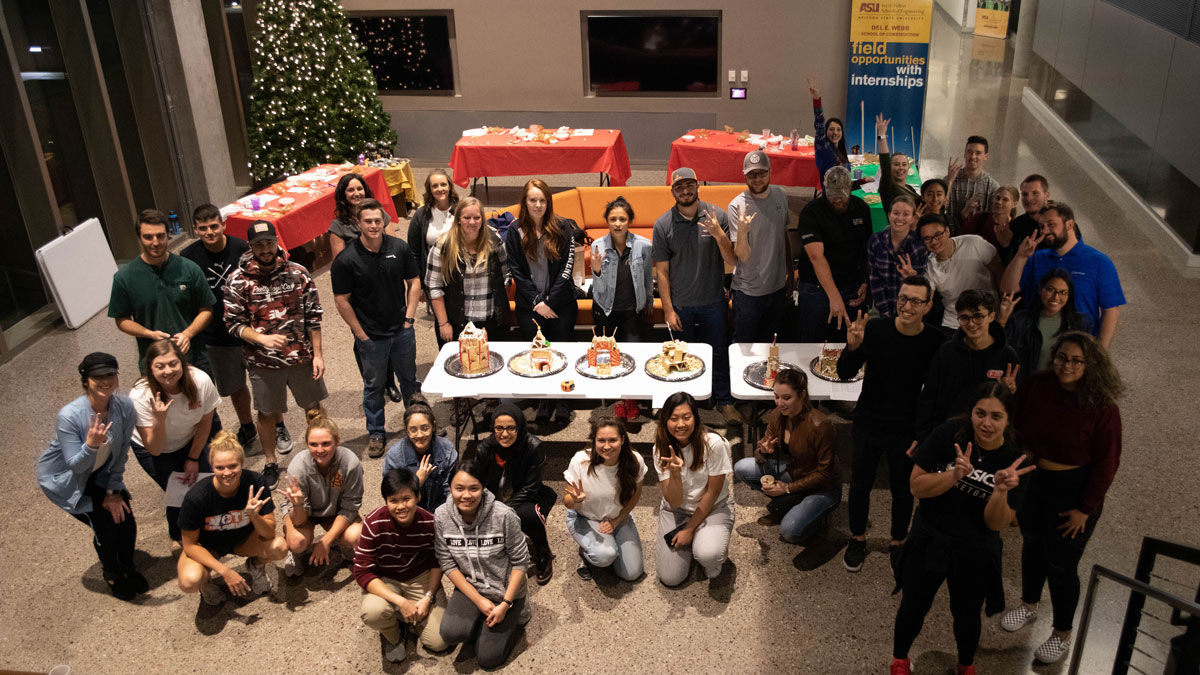
About 40 students participated in the Advancing Women in Construction student organization’s semester-end gingerbread tournament. Students were separated into eight teams at the beginning of the event and given 45 minutes to create the best design based on cost, appearance, craftsmanship, color and design. Photographer: Alisha Mendez/ASU
And our winners are ...
Judged by Del E. Webb School of Construction alumni, competitors worked in teams formed at the event and “showed great teamwork and creativity throughout the tournament,” Thwe said.
The first-place winners, with the highest marks in all five categories, were construction management majors Jay Nguyen, Shandiin Yessilth, Paige Wildin and Stettler Anderson, along with Nicholas McDonald, who is studying real estate development in ASU's W. P. Carey School of Business in addition to construction management.
Wildin says her team's victory came after their initial strategy led to some broken graham crackers.
“One unsuccessful strategy we had was assembling the floors of the gingerbread house on the house’s structure because the lower graham crackers would break from the pressure we applied from above,” Wildin said. “This caused us to assemble and apply pressure to the floors in parts on the side and then gently place them one onto the other.”
Nguyen says they avoided overspending by planning out the design ahead of time and only took structural items they needed, saving much of their budget for decorative items.
“Our education played a role in our building method, choices and teamwork,” Nguyen said.
Most competitors were students in the Del E. Webb School of Construction, part of the School for Sustainable Engineering and the Built Environment, one of the six Fulton Schools, rounded out by a couple math majors from ASU's College of Liberal Arts and Sciences.
“Students not only had a chance to apply the concepts they’ve studied throughout the semester,” Thwe said, “but also to have fun and celebrate the end of the semester while building these gingerbread houses.”
Top photo: Arizona State University construction students offer tips for the best holiday gingerbread house. Photographer: Alisha Mendez/ASU
More Science and technology

ASU and Deca Technologies selected to lead $100M SHIELD USA project to strengthen U.S. semiconductor packaging capabilities
The National Institute of Standards and Technology — part of the U.S. Department of Commerce — announced today that it plans to award as much as $100 million to Arizona State University and Deca…

From food crops to cancer clinics: Lessons in extermination resistance
Just as crop-devouring insects evolve to resist pesticides, cancer cells can increase their lethality by developing resistance to treatment. In fact, most deaths from cancer are caused by the…

ASU professor wins NIH Director’s New Innovator Award for research linking gene function to brain structure
Life experiences alter us in many ways, including how we act and our mental and physical health. What we go through can even change how our genes work, how the instructions coded into our DNA are…

